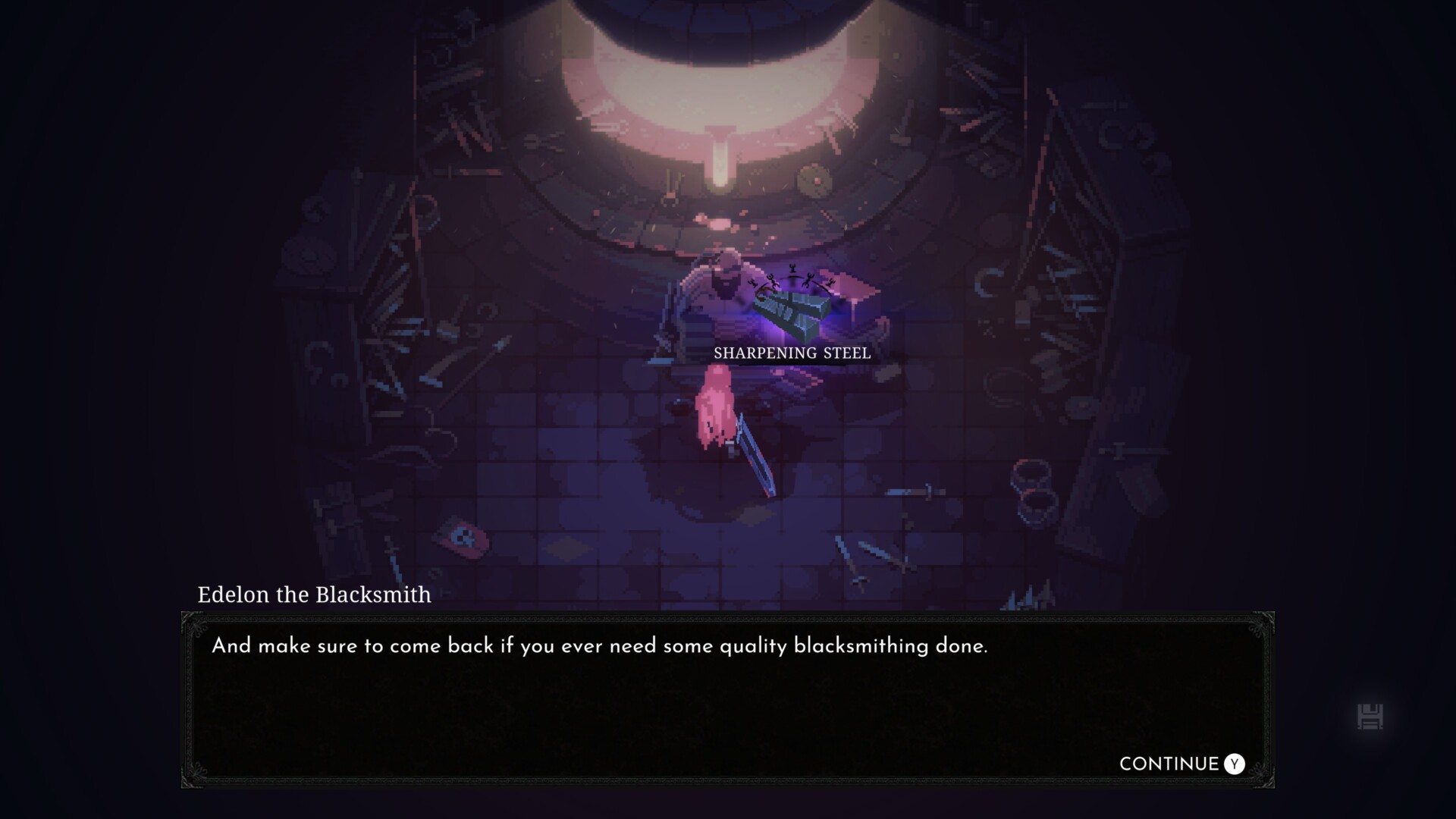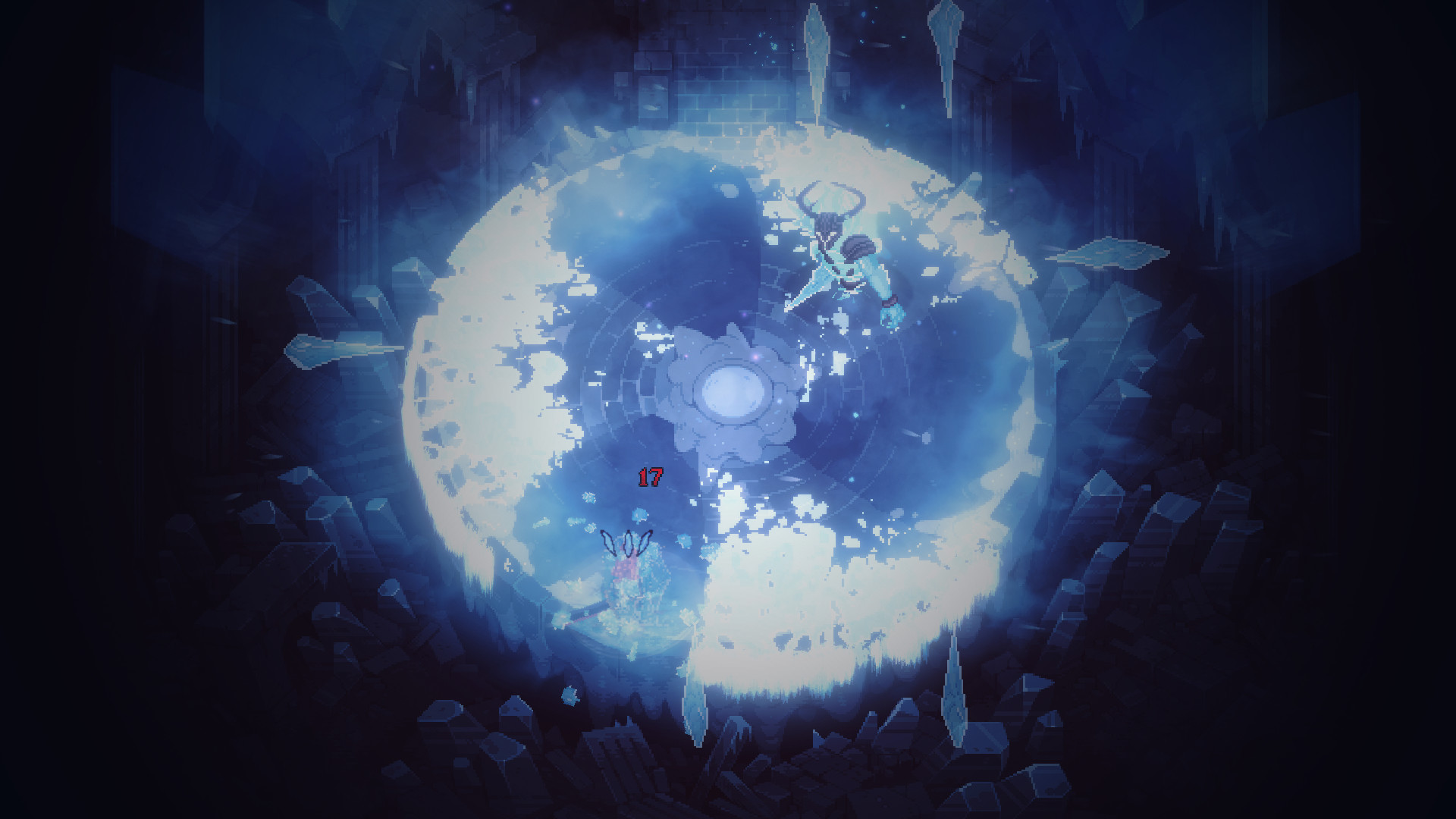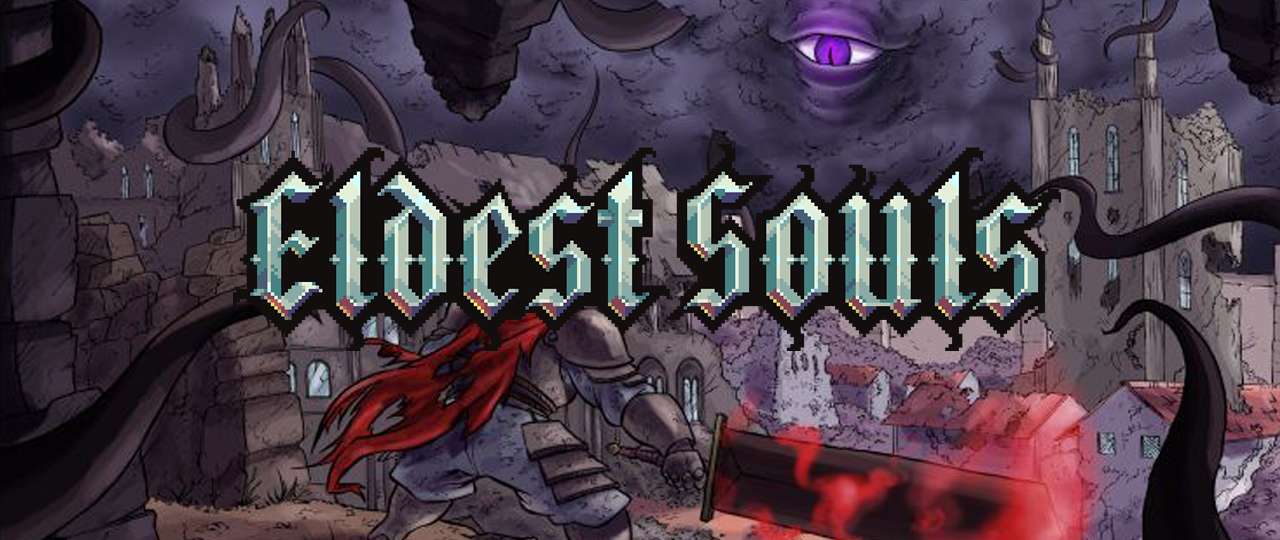

There are some problems in Eldest Souls, though, including weird pathing to certain bosses that require trap-dodging, which just feel out of place. NPC dialog is characterful and well-written, and Eldest Souls' scant item description lore comes off as the right blend of mysterious and intriguing. None of these are particularly deep, but certain ones lead to nice bonuses that may help give that leg-up on a harder boss. Outside of the fights, since there isn’t a single enemy scrub to stomp, players can engage a few light sidequests via NPC interactions. Luckily, there's a natural progression that sees players able to sense themselves improving and more effectively readying each blow after a few sessions. It takes a while to not only acclimatize, but also keep tabs on a slew of refilling bars and gauges. Arenas vary and are smartly incorporated into many of the fights, and most bosses evolve and enrage through battle.

While there aren’t alternate weapons - this would be a great pull for potential DLC, along with additional bosses - the sword’s potential shifts throughout the game at player’s whim, with the complete builds available by the endgame feeling confidently different than the first hours of play.Īs for the bosses, there’s seemingly something for everyone, and no two bosses are alike. In Eldest Souls, there’s always the option to completely re-spec from the ground up or just swap around shards to meddle with their effects before committing for the fight. There’s even a special slot that opens when a skill tree is fully powered up, available to be used on the last few bosses.Ĭombining these two systems leads to exciting experimentation, something that helps differentiate Eldest Souls from its competitors Consider Shadow of the Colossus’ main campaign, where players can only slightly increase stamina and health but are functionally identical over each fight. The boss shards are more interesting still, with each shard equippable in slots which significantly affect every action. These are interesting and present accessibility for different playstyles. For the former, players select certain paths through skill trees split among three fighting styles: Windslash, Berzerk Slash, and Counter, which prioritize agility/dashing, full-on attacks, and timed parries, respectively. That’s because almost every Eldest Souls boss provides one skill point and one boss shard upon defeat. The basic mechanics of battle in Eldest Souls utilizes a rechargeable dash, a chargeable slash, a special Bloodburst attack, and a range of stat buffs, abilities, and more nuanced tricks which will satisfy devoted tinkerers. The lion’s share of these fights demands sharp reflexes and careful positioning, however. Also depending on which one you choose the bard guy before the final boss will have different dialog and you get a different ending cutscene.10 total bosses lie in wait, a number which seems meager at first. They're all pretty good items I think, would be cool if you got to keep them.

The frost skull thing requires Hyem's essence and gives you the Blessed Trueice Prism which revives you once per fight with 15% HP.

The cultist guy requires Eos essence and gives you the Kindled Heard of Fire, which stores up 35 healing and deals 250% of that as damage when fully charged.The tree guy in the forest requires the Warden of Purity's essence and gives you the Hunters Blessing, taking 30 damage in 0.5 seconds heals you for 25% HP with a 45s CD.The Crow requires Azikel's essence gives you an Abyssal Eye which stores damage you take and releases it at 150% every 15 seconds.You can pick one of 4 places to use the empty vessel per run. Not sure what you mean, you do get to choose. Originally posted by DrachenLord LP:And you don't even get to choose which one you do.


 0 kommentar(er)
0 kommentar(er)
